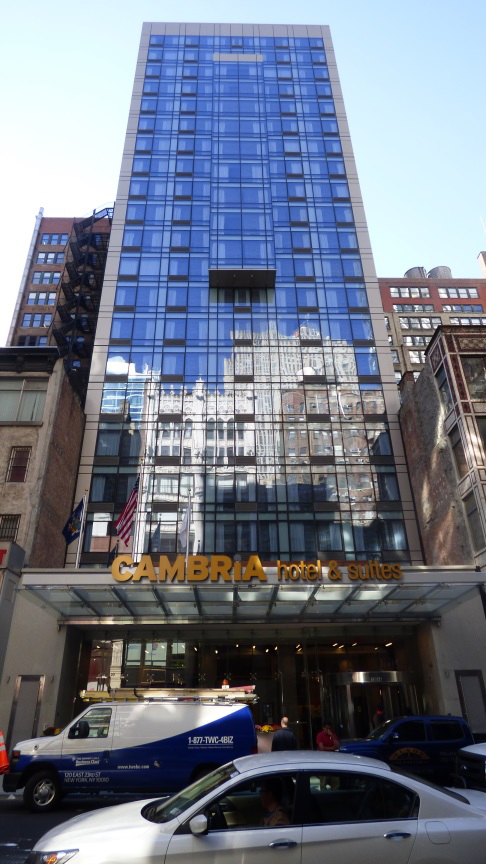News:
Green Buildings
Posted: November 24, 2014
Short primer on the benefits of LED lighting
There has been a revolution - literally, in energy technology in the past few years. If you have not had an energy audit done on your building in the last four years, you are missing many opportunities to save energy costs and attract tenants. One example is lighting. Building managers are increasingly converting lights to LEDs. You probably already know that LED lights use under half of the electricity of incandescents and T-12 fluorescents producing the same amount of light. LEDs now can be adjusted and dimmed and come in a variety of colors and forms to optimize their effectiveness. New LED fixtures can often fit right in place of the fixture being replaced. Cost savings are not "down the road," but start immediately upon replacement.
Besides the electricity cost savings, LEDs have other advantages resulting not only in greater savings. LED lights do not burn and, therefore, last much longer. Typical office LEDs are warranted for as much as 50,000 hours of operation. Given 12-hour/day, five-day/week operation, that's over 10 years until they have to be replaced; a lot longer than standard types. That frees up your office maintenance crew to do other things and reduces their number of trips up the ladder. LEDs do not give off heat, thereby reducing office AC demand, an additional energy saving.
In addition, the light from LEDs is whiter without the tints that other lights may have. They have less glare and do not flicker, unlike fluorescents, reducing eyestrain, improving worker productivity. Here's proof. An office worker working through the morning will need to take at least a short break just because of eyestrain from the glare/flicker of fluorescents. The actions of an added break, walking down the hall to get water or coffee, returning, sipping the water/coffee, resting, before resuming work must take at least five minutes, and more likely 10, which is 2% of a typical workday. Avoiding a break in the afternoon, now you have a 4% improvement in productivity right there. And if the person on break stops to talk to a colleague, office workers with less eyestrain are more productive and effective. This is all because of improved lighting.
Of course, there is a cost involved. LED prices are dropping; for a large office, warehouse, or multifamily residence, the upfront cost may be six figures. Con Ed and NYSERDA have incentives to pay you back some of these costs. Low-interest loans are available to install LEDs without having to pay anything upfront. You pay back these loans from the cost savings as they are earned. Positive cash flow. Waiting for LED prices to drop further is not a good idea. Incentives do go away and the energy cost savings (70% or greater) will likely be greater than the future drop in LED prices.
So now is the time. If you think you can only afford to convert only part of your building to LEDs now, then consider which areas currently have the oldest and highest energy usage lighting and have the greatest number of people who will benefit.
A word on economics. Most companies want to know the payback for LED procurement and installation. It will vary based on the number and the types of lights being replaced and can range from under one year to over four. Some companies have policies on payback time (they will not approve a project if the payback is more than X years). But remember, payback is only one way of measuring economic benefit. Let's say you have a proposal for LEDs at an upfront cost (after incentives) of $120,000, and the payback is on the high end of the range, say three years, beyond company policy. In three years the company will have gotten its $120,000 back. But the company has at least seven more years of added savings. If anything, energy savings later will be greater than $40,000 per year for two reasons. One, the future unit cost of electricity (cents/kWh) will likely increase. So, in seven more years, you will have avoided paying at least $280,000 (and more likely between $350,000 and $400,000) in your electric bill. Even assuming the lower figure, by implementing this project your company will have saved $160,000 over a 10 year period for a rate of return of 13.3%/year. Tell me, does your company earn a rate anything near this for its cash? The second reason is that your existing lights will need to be replaced anyway, likely several times during the 10-year period. You will need to pay that capital cost, which may exceed $120,000 and you won't get the cost savings.
Finally, buy smart. There are a growing number of manufacturers of LEDs. Some produce better quality lights than others. Do not buy on price alone. An energy professional can help you assess just what your lighting needs are, exactly what lights need to be replaced, the best LEDs to do so, manage the installation, and help you get the proper incentives and financing (if needed) you are entitled to. Maximizing these and the other benefits and ensuring reliability is worth the cost of an experienced expert.
CCES has the experts to help you plan out a lighting upgrade to maximize not only your energy cost savings, but also the productivity improvements and maintenance reductions. We can help you design the right lighting to maximize productivity with the least interference. We can plan and buy smart for you, resulting in the greatest benefits to make you look good. Contact us at [email protected] or at 914-584-6720.
Marc Karell, P.E., CEM, EBCP, is the president of Climate Change & Environmental Services, LLC, Mamaroneck, N.Y.
Tags:
Green Buildings
MORE FROM Green Buildings
IREON Insights: DURA Architectural Signage manufactures and delivers over one million signs
Long Island City, NY Since its founding in 1955, IREON member DURA Architectural Signage has proudly manufactured and delivered more than one million signs to clients across a wide range of industries. From architectural interior signage to large-scale exterior installations, their work can be seen in corporate








.gif)

.gif)
.jpg)
.gif)